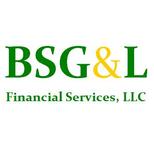First-quarter GDP growth seems to be following a familiar trend. The economy is having a hard time generating any momentum.
The weather, the strong dollar, the West Coast port strike and estimates of slower world growth have all contributed to this disappointing performance.
March’s employment number came in at a paltry 126,000 hires. The Labor Department also reduced the hires initial estimate for January and February.

The closely watched reports of manufacturing output and capital spending also showed declines as well.
Energy Slump
The fall in oil prices has caused exploration and production companies to drastically reduce capital spending.
This filters down to the industries that support oil and gas drilling.
Over the last few years, the majority of capital spending for the total economy had been in drilling and industries that consume hydrocarbons such as chemicals and refining.
Over the last several years, we have experienced a very weak first quarter and an increase in growth in the second and third quarters.
For the first time in several quarters, we are seeing acceleration in real wage growth. The median income quartiles have not seen real wage growth since the recession ended.
Wage Growth
When wages rise, consumer spending has an increased ability to grow as well. The Commerce Department announced March consumer spending increased at a 0.4% rate.
This is the largest increase since last August and followed three months of below-average spending.
That, plus employment gains, may show we are back on track to increase economic growth in coming quarters, in my opinion.
US Leads
The United States was the primary engine driving world growth.
There are now signs that Europe is beginning to expand.
Several weeks ago, the International Monetary Fund revised upward its estimate for European growth to 1.5% for this year and 1.6% for 2016.
Commodities
As the dollar pulls back, commodities in general are showing signs of life. Copper, oil and agricultural commodities are showing signs of price increases.
Oil demand for refined petroleum products is increasing worldwide.
Our refineries are finished with their spring turnaround and are adding about 125,000 barrels a day of production each week.
By the end of May, these refiners should be back to consuming sufficient oil which should begin to reduce the amount in storage.
Oil Rebound?
With oil production beginning to decline and consumption ramping up, we should see oil prices stabilize between $60.00 per barrel and $65.00 per barrel in my opinion.
We are beginning to add to our positions in energy in the Pure Growth portfolio.
We are staying with companies that have strong balance sheets.
We like Linn Energy (LINE), EOG Resources (EOG), ConocoPhillips (COP) and Concho Resources (CXO).
These are very efficient producers that are profitable at today’s prices and I believe they have the potential to be even more profitable if prices rise.
Gas Plays
For natural gas, we like Gastar (GST) and Range Resources (RRC).
The mid-stream sector has stabilized some what from the initial over reaction to the fall in oil prices.
These companies derive most of their income from fee-based revenue through their pipelines and NGL processing. They are largely shielded from the price of the hydrocarbon.
Several mid-stream companies we follow are building capacity to take advantage of the domestic expansion in production and demand in the NGL space.
Our two favorite names in this space are Enterprise Products Partners (EPD) and Kinder Morgan (KMI).
Consumer Plays
We are also adding to our positions in several companies that are showing good growth in the consumer sector.
The names we like are Kroger (KR), Walt Disney (DIS), Home Depot (HD) and Whirlpool (WHR).
We are not adding new money to our industrials positions at this time, but we are not selling out of them either.
Photo Credit: Martin Burns via Flickr Creative Commons
The investments discussed are held in client accounts as of May 26, 2015. These investments may or may not be currently held in client accounts. The reader should not assume that any investments identified were or will be profitable or that any investment recommendations or investment decisions we make in the future will be profitable.


